Nubuck Vs Suede: A Tanner, Leatherworker, and Bootmaker Weigh In

Expert Verified By: Michael Batson, Leatherworker and Vice President at North Star Leather Company
To start, let’s be clear: both suede and nubuck are forms of leather. They’re both a little fuzzy and made by using machinery to reveal the fleshy fibers beneath the animal’s skin — or more accurately, the fibers underneath the “grain,” the outer layer of the animal’s hide.
But nubuck and suede are very different.
Most leather has a relatively smooth surface — either the outer layer is relatively in tact, which is called “full grain leather,” or it’s been smoothed a little. But suede and nubuck have a more nappy, often velvet-like finish (suede nappier, nubuck velvetier) because they don’t have that outer grain.
Suede and nubuck can look similar because they’ll usually have a softer texture, but they’re used and valued in different ways.
Key Takeaways: Nubuck vs. Suede
Nubuck Leather: Full-grain leather is abraded, or sanded down, to give it a slight nap. It’s basically “normal” leather with the skin layer sanded away.
Suede Leather: Full-grain leather that’s been split down the middle, revealing fleshy fibers. Then, it’s usually sanded for a more uniform surface.
Both vary in durability, quality, and thickness, but suede usually fetches a higher price.
What Is Suede?
- Made from the underside of the animal’s skin
- Usually softer and more delicate
- Usually lightweight and pliable
- But there are always exceptions
The name “suede” comes from the French phrase “gants de Suede” which literally means “gloves from Sweden.” As the name suggests, this material is great for more delicate items, like gloves, where you’re looking for a soft, flexible fit because suede is usually lightweight and pliable.
Suede is a split leather: it’s typically thinner and more supple than nubuck, but it’s possible to make very thick, hardy suedes — it’s just that the market prefers the more delicate kind.
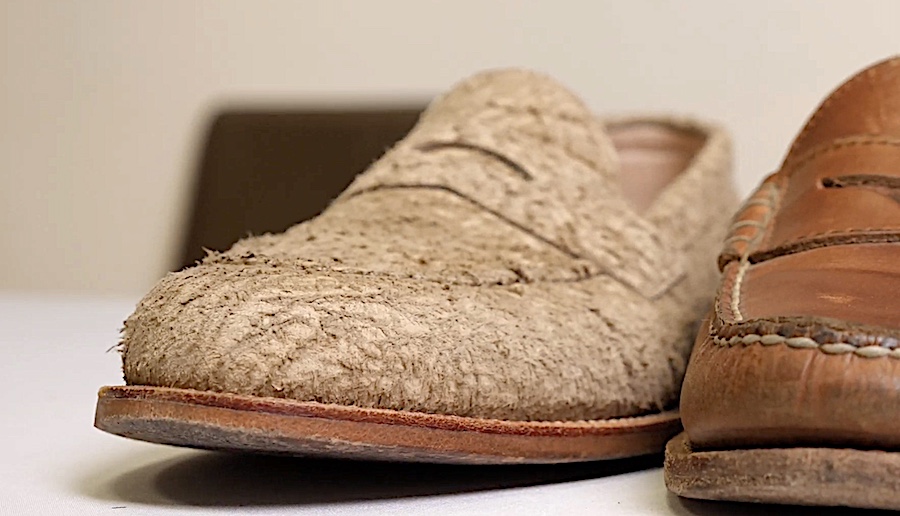
“Suede is effectively produced on the corium area of the skin beneath the outer grain,” says Andrew Bailey, the sales director of suede-focused tannery Charles F. Stead. “That can be done by taking a hide and just flipping it over to produce a classic reverse suede, or roughout as it’s sometimes called; or it can be done by taking a hide, removing a thin grain layer, and then utilizing the rest of the hide.”
(That second option is usually what defines suede. Roughout is typically considered a different product, as it’s “just” using the other side of full grain leather.)
Is Suede Durable?
Suede is generally less strong than nubuck or full grain leather, but not necessarily.
“It’s a massive misconception,” says Bailey. “Depending on the construction, a shoemaker is going to use anything from one millimeter to two millimeters thick — perhaps up to three for a heavy boot. But that same thickness can be provided on a suede or a grain. And you can get some very thin full grain leathers.”
You can also make suede that’s several millimeters thick — an animal hide is thick enough to do that even if it’s been split. It’s just become more common to make soft and supple suedes.
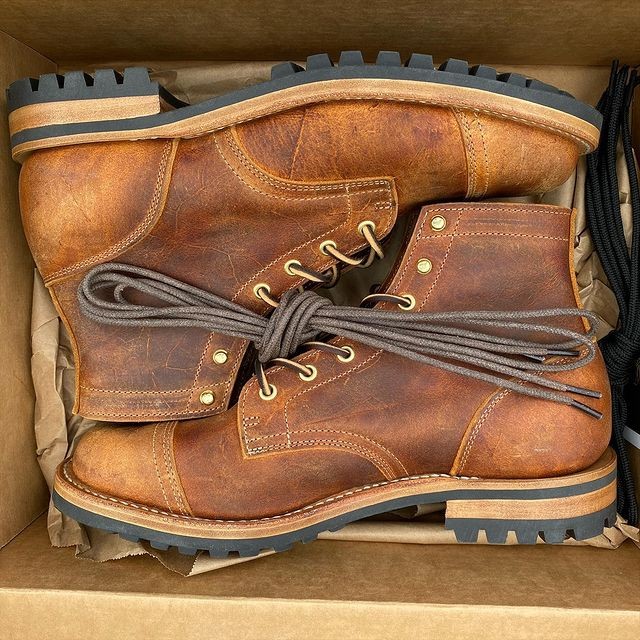
“The durability depends on how it’s been treated, the substance, the temper, and a host of other elements that are much more important than whether it’s suede or full grain,” says Bailey.
Famous examples of hardwearing, outdoorsy suede include CF Stead’s Waxy Commander and Rambler products. These are both waxed suedes, which is one way of making suede more resistant to stains and water. But even without waterproofing, an advantage of suede’s surface is that it’s more resistant to scratches than most leathers.
“You can scratch a grain leather and damage the grain epidermis and there’s no way of repairing that,” Bailey notes. “With a waxed suede, you just brush it and wax it back in. And the same is true with other suedes. They’re really nothing like as delicate as many people would have you believe. It’s not just a summer shoe, it’s for winter as well.”
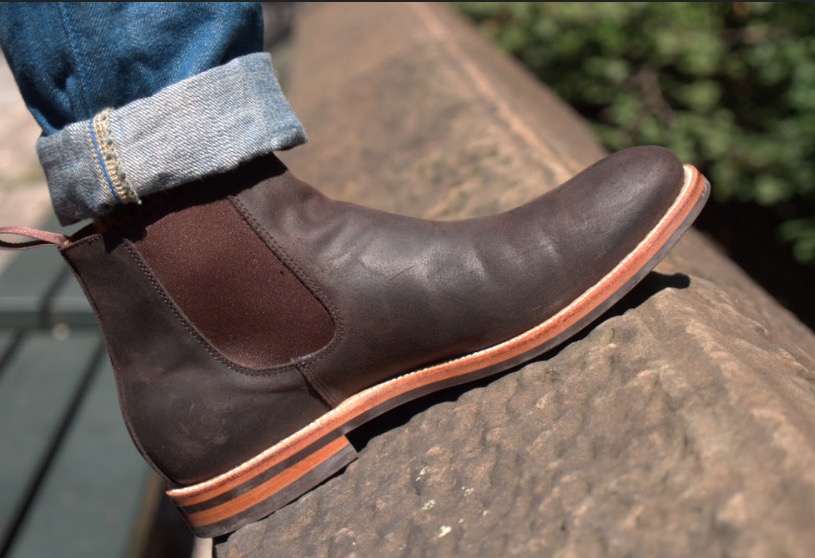
Pros: Suede
- Usually thinner, more supple, more scratch resistant, and easier to break in than smooth leather
Cons: Suede
- Usually more delicate and less resistant to stains and water than smooth leather
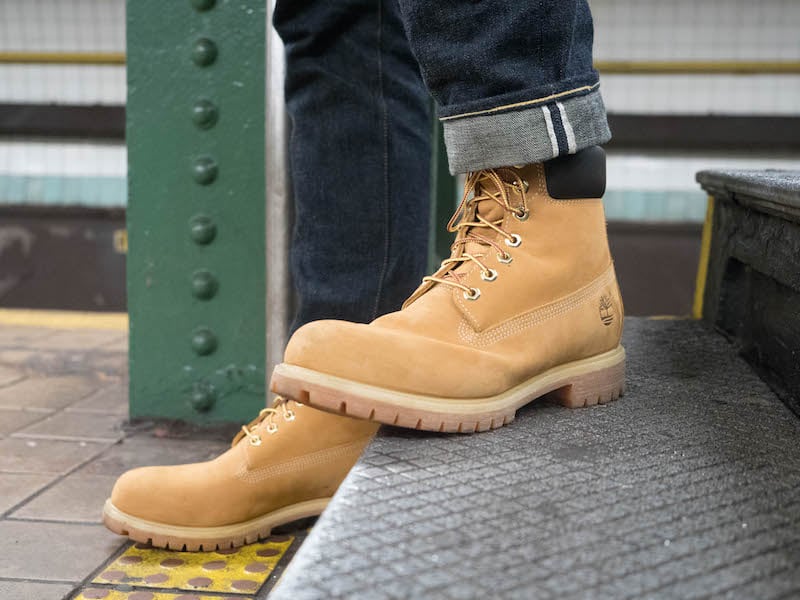
What Is Nubuck?
- Not split; it’s full grain leather with a sanded down surface
- Usually more durable than suede
Nubuck, unlike suede, is made without splitting off the outer layer (“grain”) of leather like suede is.
“Nubucks are what suedes wish they were,” says Vince Romano, founder of Truman Boot Company. “Suedes are split, nubuck is just like if you took sandpaper to full grain leather. The term really just defines how polished it is.”
Both suede and nubuck usually appear a little fuzzy because they both have exposed protein fibers from under the skin’s outer layer.
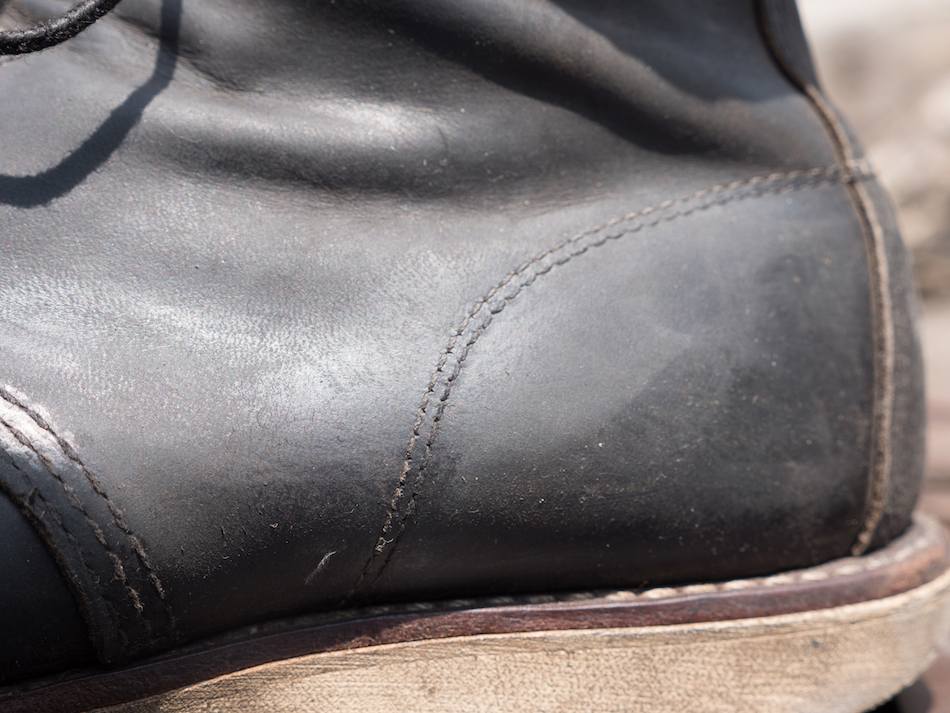
But some nubucks are so close to full grain leathers that the two can be confused; the “Rough and Tough” leathers from Red Wing Heritage, for instance, are actually nubucks.
“This doesn’t make them lesser quality, it’s more about look and feel,” says Michael Batson of North Star Leather Company. “Red Wing’s nubuck is just as durable as their other leathers.”
He notes that full grain leather hasn’t had any “correction” done to smooth or paint its surface, while nubuck is a “corrected grain” leather. But like the Red Wing case shows, no one is really controlling these terms.
“The amount of correction that a nubuck has can vary,” he explains. “There are a few manufacturers, like Moore and Giles, who will call lightly corrected leather ‘enhanced full grain,’ but I think that that’s a little bit deceptive.”
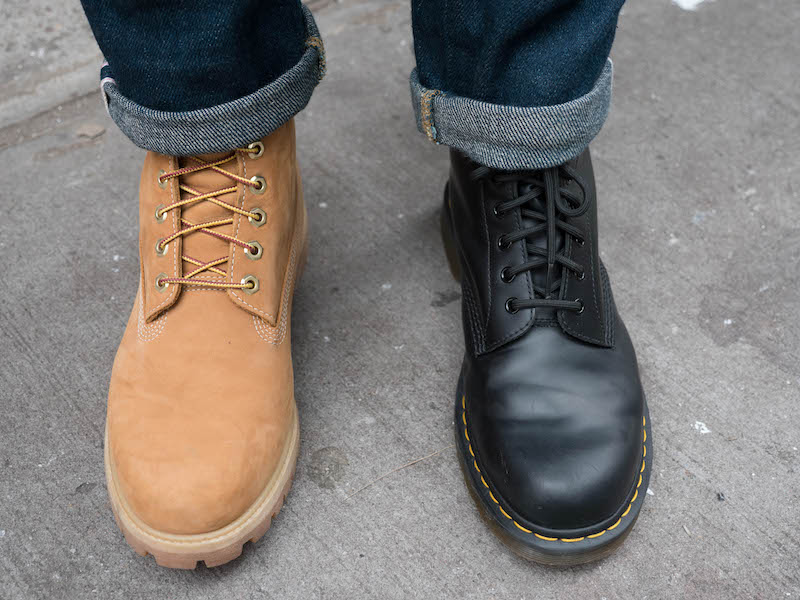
While suede is generally cheaper than nubuck, nubuck is less common in high end footwear. This is partly because it doesn’t always get categorized as nubuck, but it’s also because sanding away the top layer of a leather is sometimes performed to conceal imperfections and scars on lower quality hides.
Batson notes that the ability of nubuck to remove imperfections is sometimes exaggerated, because you’re not necessarily adding a finish coat like you’d see on the very glossy Dr. Martens leather.
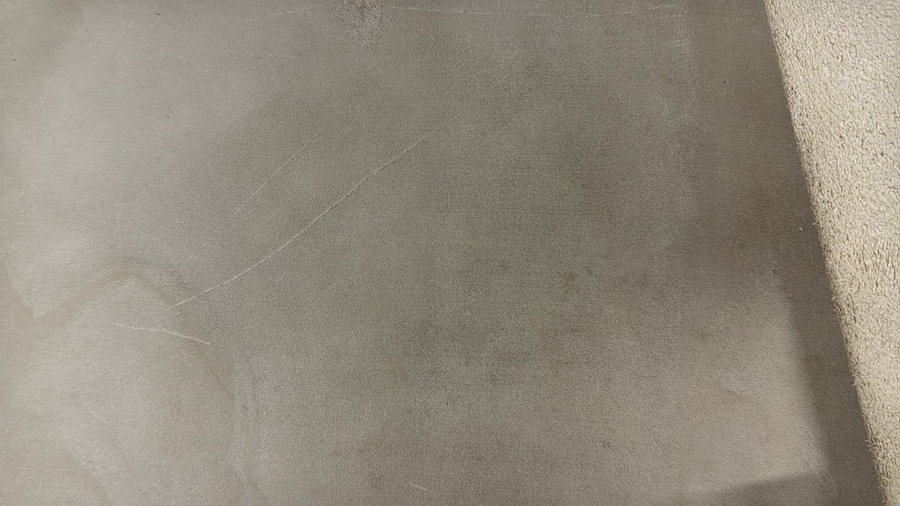
Still, nubuck is better known for being used on inexpensive footwear like Timberland’s Premium Waterproof boot.
“Nubuck is a higher grade than suede,” says Romano. “But it looks cheaper.”
Pros Nubuck
- Typically thicker, tougher, and more waterproof than suede
- Typically more scratch resistant than full grain leather
Cons Nubuck
- Has less “character” than suede or full grain leather
- Usually doesn’t develop a great patina with wear
- So it’s less common in higher end footwear
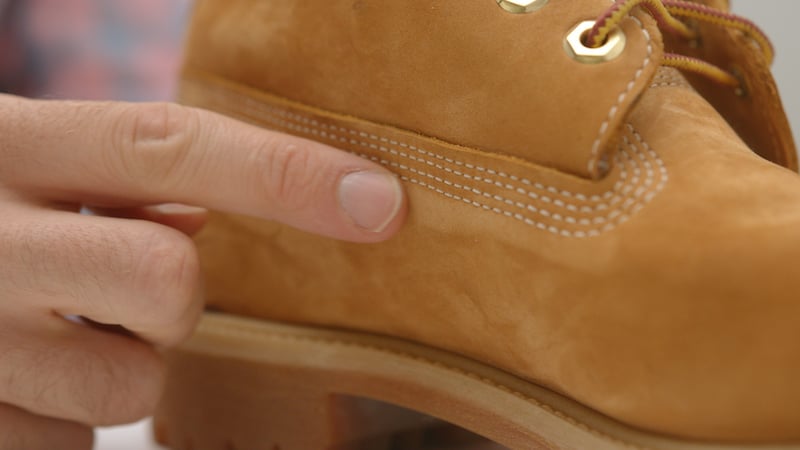
Buckskin vs Nubuck
Nubuck is not buckskin. They are two very different leathers. Buckskin is a leather traditionally made by Native Americans from deer hides. It’s soft, stretchy, breathable, and warm. It was common on moccasins, but it’s not usually considered suitable for boots.
Nubuck, on the other hand, was invented in the 19th century and its velvety texture led to it being used on elegant gloves. It didn’t appear to gain much popularity on footwear until the Duke of Windsor was visited the United States in the 1930s — wearing nubuck shoes.
Further Reading
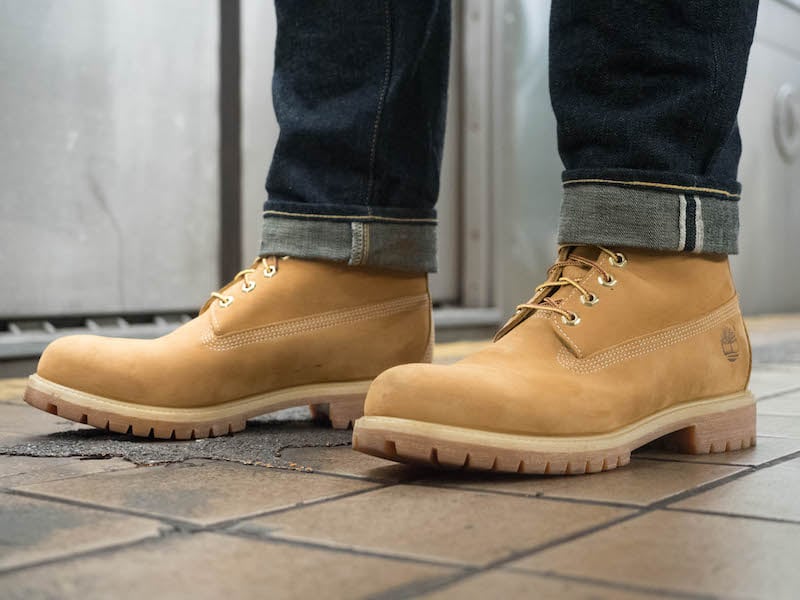
Timberland Premium Waterproof Boot Review – Is the Hype Real?
Looking for a high-quality, durable nubuck boot that holds up the elements?
Learn more →
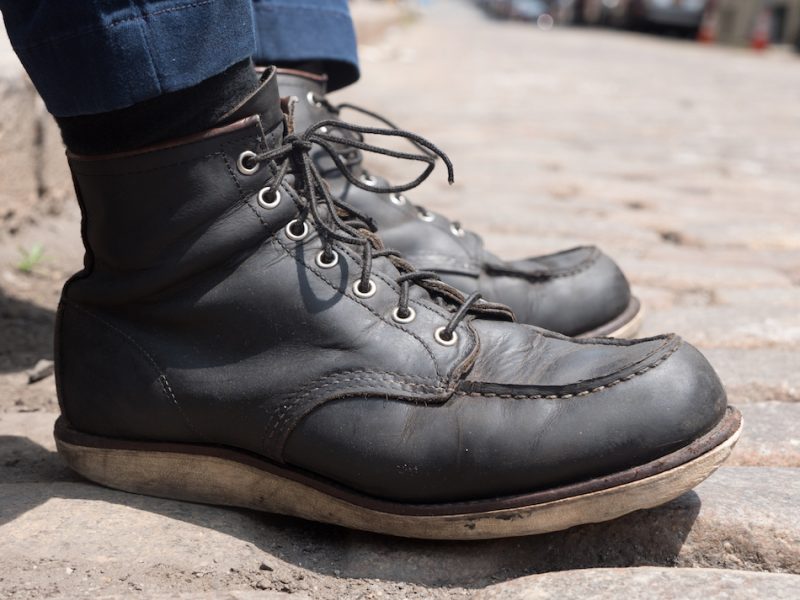
Is Nubuck Durable?
Keep in mind that the durability of nubuck varies based on the type of animal hide, the thickness of the material, and how it’s tanned and processed.
Generally, though, nubuck is considered durable because it’s typically thicker than suede and more scratch resistant than full grain leather. It will show water spots if some drips on it, but it should dry quickly without staining.
One last thing to note: nubuck doesn’t develop patina to the degree that suede or leather do, so if you’re looking for the character that comes with wearing in a pair over time, nubuck is not for you. As a rule (for which there are always exceptions), nubuck is more about function than form.
How to Take Care of Nubuck vs Suede
To start, get a suede brush. Whether you’re working with suede or nubuck, the raised texture of the material means it traps dirt more easily than leather, so a stiff haired brush (I like a brass bristle brush) is your best friend when it comes to keeping your shoes looking sharp.
You want stiffer bristles to get under the nap of the material. If I’ve worn suede boots in the rain, they’ll have water spots on them indefinitely — until I just give them a quick brush.
This 4-way Shacke brush has a couple of different textures, which means you can use it on both suede and nubuck boots. Plus, it’s got these handy protruding bits for getting in creases and corners.
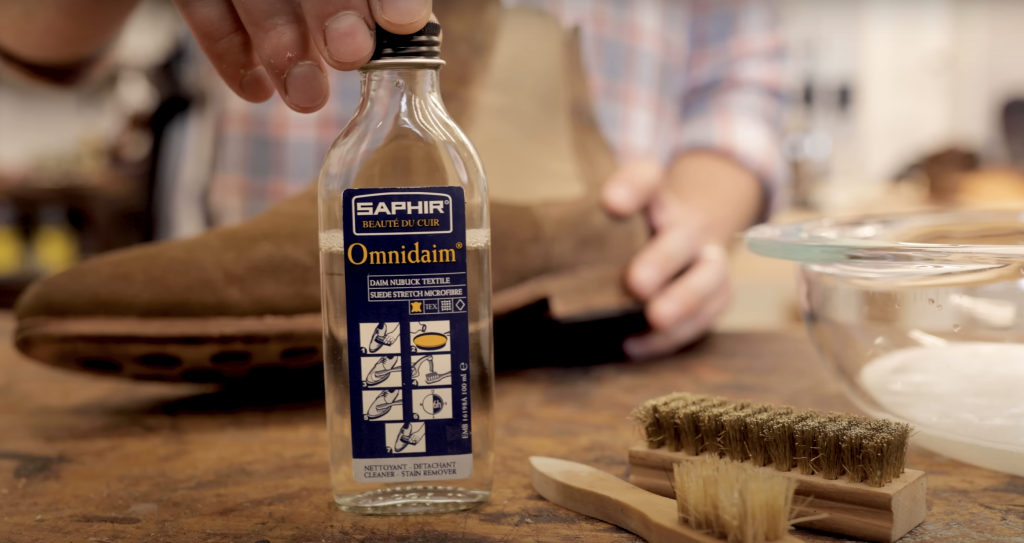
Got stubborn stains that are resisting your brush? Don’t use water; invest in a suede/nubuck-specific cleanser. We like Renewbuck & Dry Cleaner Kit from Timberland, or Saphir’s Omnidaim.
Many like to finish off their cleaning by applying a waterproofing spray, like this one from Kiwi. Seriously, just go see our full step by step guide to cleaning suede that we filmed with a cobbler.
Wrapping Up Nubuck vs Suede
Both suede and nubuck are great for business casual shoes and boots like Chelseas or chukkas — if used on the right kind of footwear, it exudes a perfect balance of relaxed and refined. Just note that despite this, you’re really unlikely to find nubuck on dressier footwear.
But you can also get suede or nubuck for tough, hardwearing boots. If you’re worried about stain upkeep, just grab a waxed suede; Waxy Commander is the industry leader you can find almost anywhere.
Whichever material you pick, it adds texture to your look and, more likely than not, it’ll be easier to break in than full grain leather!




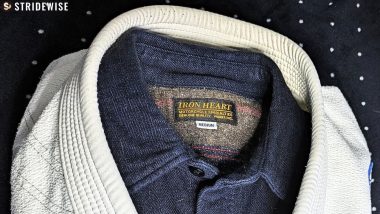


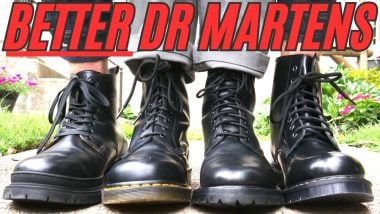
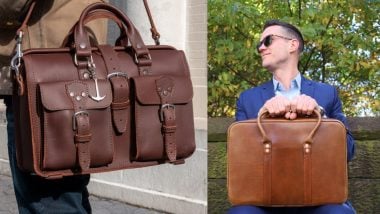
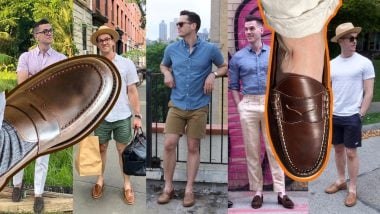
I thoroughly enjoyed the article! It was more of an education than I expected, and I was pleasantly surprised!! Wow, seems I knew little about leather!! Thanks again for the education!
Haha delighted you found it useful, Chip!
Brushing suede or nubuck regularly will raise the nap and remove dirt and dust. This will keep your shoes looking smooth and fresh. This is a quick and easy way of looking after either material.
Yep, that’s a method that keeps things simple!
Ordered some mark albert nubuck outriders. Was hoping those were waterproof but sounds like I may need to weatherproof it before wearing them on a hiking trip.
Thank you for this information, I was going to go ahead and wear my new Hotter suede boots outside right away… but after this article I took the advice to purchase Kiwi products to protect my new boots. Thanks for the education… now I’m sure they’ll last me quite a while!
Hey so glad it was helpful, Anna! Appreciate your comment.
Thank you for this article! So basically nubuck only can be made using calf/cow or deer and not other animal?
No it can be made with anything, it’s just usually steer.